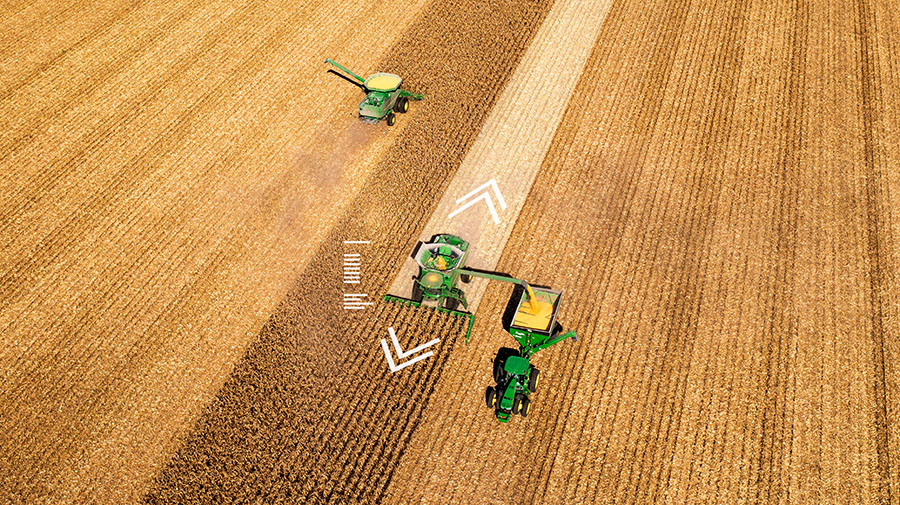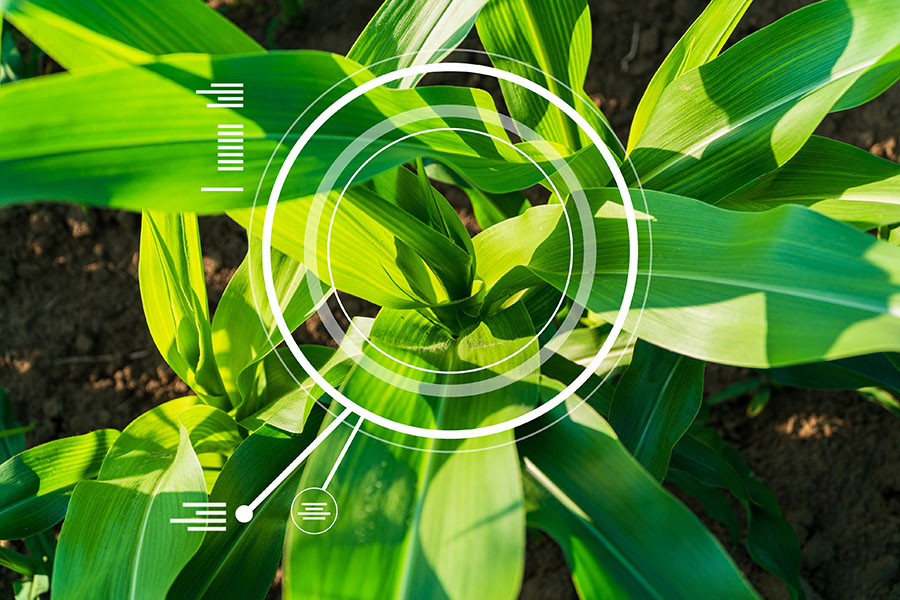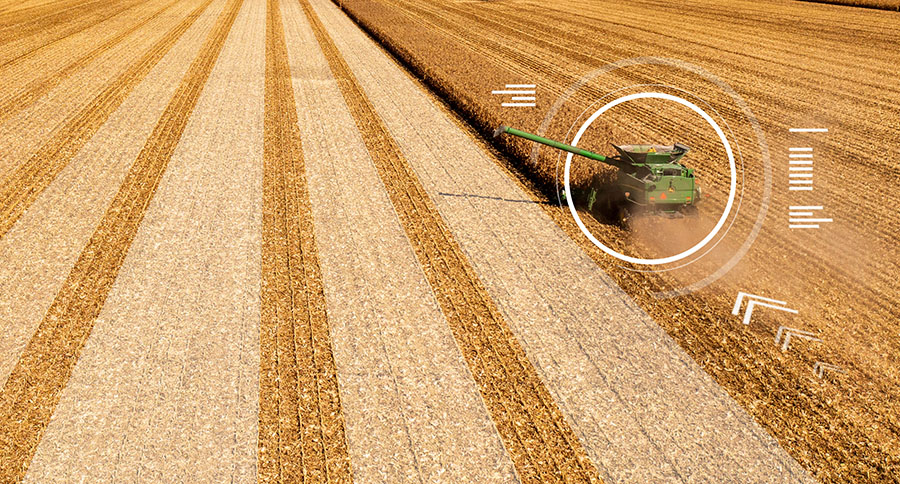Today, there is an unprecedented opportunity for farming to advance more quickly and efficiently than ever before as technology and tradition converge. Across the globe, farmers are embracing this era of possibility, where predictive analytics guide planting decisions, drones scout fields with unparalleled precision, and robotic harvesters navigate rows with the finesse of seasoned hands.
Welcome to a new age of technology in agriculture, where farmers find themselves at the forefront of innovation as the timeless rhythm of planting and harvest harmonizes with the cutting-edge algorithms of artificial intelligence (AI).
To be clear, artificial intelligence in agriculture is not new. For decades, AI technologies have enabled farmers to make more informed decisions, leading to increased efficiency and productivity. Today, however, it’s more accessible than ever, with a new form of generative AI changing the game for many farmers.
Let’s back up a step. What is AI, exactly?
“AI is a catch-all term,” said Kit Barron, Head of Data Science, Data Engineering, & Analytics at Farmer’s Business Network. “It encompasses all kinds of technology where computers mimic human behavior.”
Going back to the beginnings of AI in agriculture, various forms of it — including machine learning and computer vision — have helped agricultural producers engage in data-based decision-making and optimize their products and supply chains. These early AI applications laid the groundwork for more sophisticated systems that can predict weather patterns, manage resources more efficiently, and even automate tasks. The evolution from simple analytical tools to advanced, autonomous systems reflects the rapid advancement of AI technology in the farming sector. But AI has increasingly become something used in everyday farming. Look no further than autonomous tractors and robotic dairy farms to see some of the more innovative examples.
The recent boom of so-called generative AI, or GenAI for short, continues this trend of what Barron calls “farmer-facing AI.” Put simply, GenAI tools are capable of generating original, unique data, including not only text and images but also computer code and synthetic datasets. Crucially, users can benefit from these tools without any understanding of the underlying technology — something that anyone who has used OpenAI’s ChatGPT or Google’s Bard will know. The same can’t be said for predictive analytics, remote sensing, and precision agriculture platforms, which typically require a user to have some amount of technical knowledge and expertise to leverage effectively. Even learning to fly a drone to monitor crop health or apply treatments involves a steep learning curve compared to the intuitive user interface of most generative AI applications.
Farmer’s Business Network, the organization Barron works for — which collaborates with POET in its Gradable program, a voluntary, farm-led platform that matches farmers who use environmentally friendly practices with buyers who pay a premium for low-carbon corn — has already launched a GenAI tool aimed directly at farmers. Called Norm, the tool is built from the same language model on which ChatGPT is based and is trained to answer a wide range of farming-related queries.
Barron sees this kind of technology as a great equalizer.
“Farmers face a wide range of complex problems on any given day, and small producers don’t have the same resources as larger ones — for example, teams of experts on speed dial. With Norm, we’re trying to make that same level of expertise and problem-solving available to anyone at any time.”
This accessibility and ease of use allows for what Barron refers to as a “paradigm shift” for many farmers.
Dr. José-Marie Griffiths, President of Dakota State University, a four-year higher education institution in Madison, South Dakota, that’s training the next generation of professionals in emerging technology, agrees that AI is beginning to narrow the gap, although she doesn’t see large-scale agricultural producers being displaced anytime soon. They will, however, likely have to adopt new strategies.
“AI is going to create more and more efficiency gains in farming, and hopefully this will benefit everyone,” she said. “But it will take large producers working in alignment with governments, regulators, and the academic community to make that happen. For small farms, the current wave of generative AI is beneficial in terms of locating, summarizing, and interpreting information, which can make a huge difference in the day-to-day business.”
For both small- and large-scale farmers, Griffiths also points out that the proliferation of AI in agriculture will require new investments in infrastructure. More broadband, more computing power, and more edge computing capabilities, which allow data to be housed and processed more locally, will all be needed to support farmers’ growing use of AI tools, especially in the field. In other words, AI adoption involves more than meets the eye.
For example, while AI stands to make farms more efficient, productive, and profitable, it will also make farms increasingly reliant on factors outside the farmer’s control. Some of these, like threats related to data privacy and cybersecurity, may be totally unpredictable. According to Griffiths, farmers will be able to safely benefit from GenAI tools without diving deep into these considerations, for the most part. She does caution, however, that a thoughtful approach is necessary.
“We always have to have a little skepticism about new technologies,” Griffiths said. “When people implement new tools and AI especially, they should ask questions about it. For example, does it come with new risks? Who might benefit from exploiting those, and how can they be managed?”
While Griffiths emphasizes discretion, her overall attitude toward AI in agriculture is one of deeply informed optimism. Similarly, Barron believes that with mindful development and application, the sky is the limit for this new generation of tools.
“ChatGPT was big when it came out, and most people have used it or at least heard of it by now,” said Barron. “But many people are still underestimating what these tools can and will do. All of us — people, businesses, governments — we’re trying to wrap our heads around it. Part of our mission at Farmer’s Business Network is to help farmers learn about the emerging possibilities and feel confident in taking advantage of them.”
As technology rapidly advances, AI will continue to revolutionize industries across the board, and agriculture will be no exception. From precision farming techniques that optimize crop yields to predictive analytics for smarter resource allocation, AI is poised to lend a helping hand to farmers across the country. Farmers are increasingly integrating AI-driven solutions into their operations, which can enhance efficiency, sustainability, and productivity.
As generative AI begins to play a more central role in agriculture, its promise lies in real, tangible benefits, like assistance with crop management, pest control, and market insights, directly impacting productivity and the bottom line. Still, the shift is about more than just the success of individual producers — as Griffiths points out, enhancing and optimizing agriculture can benefit everyone. In embracing AI, farmers may be sowing the seeds for a more resilient and equitable future in agriculture.










